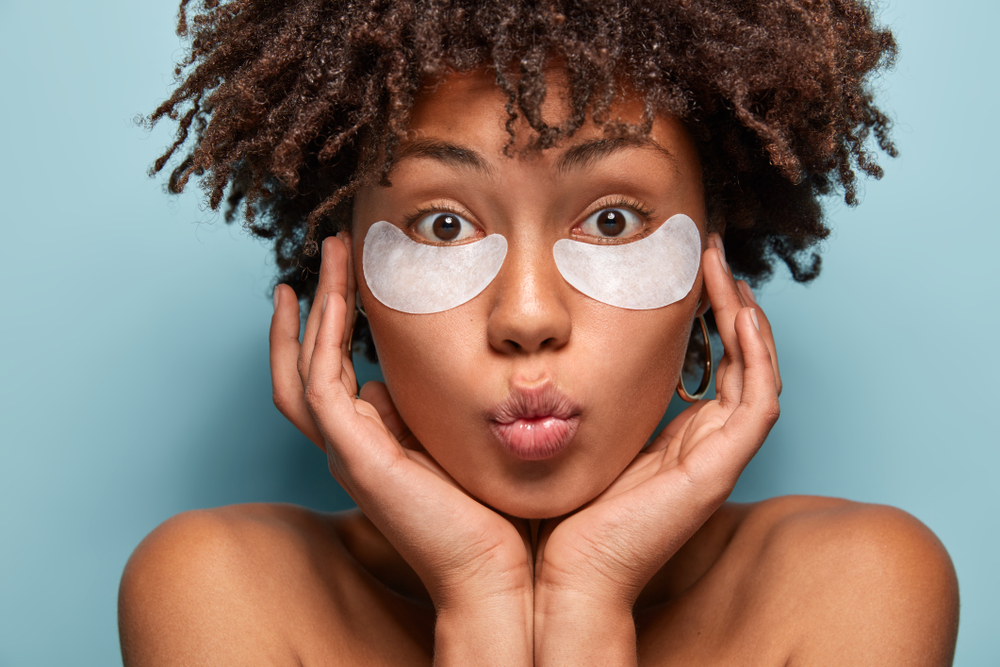The undereye area is unlike any other part of the face. With its delicate structure, minimal fat padding, and high blood vessel concentration, this region is particularly vulnerable to discoloration, puffiness, and signs of fatigue. Because the skin here is so thin, even minor circulation issues can create a noticeable shadow effect.
Dark circles form due to a range of factors, including genetics, skin aging, dehydration, and lifestyle choices. Some people naturally have more visible blood vessels under their eyes, while others develop pigmentation due to prolonged sun exposure. The way light interacts with hollowness under the eyes can also create an illusion of darkness, making the problem seem worse than it is.
How lifestyle affects your undereye area
A lack of sleep isn’t just exhausting—it actively affects the appearance of your skin. When you don’t get enough rest, blood vessels dilate, creating a darker hue beneath your eyes. Fluid retention can also lead to puffiness, making undereye circles even more prominent.
Hydration is another key factor. When the body lacks sufficient water, skin becomes dull and sunken, exacerbating the shadowing effect. Drinking enough water throughout the day helps maintain skin elasticity and reduces the prominence of undereye circles.
Allergies and diet play a bigger role than you think
Seasonal allergies can contribute to dark circles due to inflammation and excessive rubbing of the eyes. Histamine release dilates blood vessels, leading to a darker and swollen appearance. Addressing allergies with antihistamines or avoiding triggers can significantly improve undereye concerns.
Diet also influences how the skin looks. High-sodium foods encourage water retention, leading to puffiness, while nutrient deficiencies—especially in iron, vitamin K, and vitamin C—can contribute to skin discoloration. A diet rich in antioxidants, leafy greens, and hydration-boosting foods supports a brighter, more youthful undereye appearance.
The impact of environmental exposure
Excessive sun exposure accelerates collagen breakdown, thinning the skin and making undereye pigmentation more prominent. UV rays can also trigger excess melanin production, leading to dark patches under the eyes. Wearing sunscreen daily, even indoors, and using sunglasses outdoors helps prevent further damage.
Pollution and blue light exposure play a hidden role
Environmental pollutants can lead to oxidative stress, weakening the skin’s protective barrier and contributing to premature aging. Additionally, prolonged exposure to blue light from screens may accelerate pigmentation issues, further intensifying undereye circles. Protecting the skin with antioxidant-rich skincare products and limiting screen time before bed can help mitigate these effects.
Skincare solutions that actually work
Many eye creams promise to erase dark circles, but only a few contain ingredients scientifically proven to make a difference. Caffeine helps constrict blood vessels, reducing puffiness, while peptides stimulate collagen production for firmer skin. Vitamin C brightens pigmentation, and hyaluronic acid plumps the area to minimize hollowness.
Retinol, a form of vitamin A, is another powerhouse ingredient that improves skin thickness and encourages cell turnover, making dark circles less noticeable over time. However, it should be used cautiously in the delicate undereye area to avoid irritation.
Cold therapy and massage can offer immediate relief
Applying a cold compress or chilled spoons to the undereye area constricts blood vessels, temporarily reducing puffiness and redness. Gentle lymphatic drainage massage can also help by stimulating circulation and reducing fluid buildup. These methods offer short-term relief but are best used in combination with longer-term treatments.
Medical and cosmetic interventions
For those whose undereye circles are caused by excess pigmentation, dermatologists often recommend laser treatments or chemical peels. Laser therapy helps break down excess melanin and stimulate collagen production, leading to a smoother and more even-toned appearance. Peels containing glycolic acid or lactic acid gently exfoliate the skin, fading hyperpigmentation over time.
Fillers restore lost volume for a smoother appearance
One of the most effective treatments for hollow undereyes is hyaluronic acid fillers. When injected strategically, fillers add volume to the tear trough area, reducing shadows and making dark circles less visible. Results can last up to a year, offering a non-surgical solution for those looking for immediate improvement.
Finding the right treatment plan
Because undereye circles result from multiple factors, the best results often come from a combination of treatments. Addressing lifestyle habits, using targeted skincare, and considering professional interventions can lead to noticeable improvements.
Regular reassessment is essential, as skin changes over time. A treatment that works today may need to be adjusted in the future. With the right approach, undereye circles don’t have to be a permanent concern—science now offers multiple ways to achieve brighter, more refreshed eyes.

















